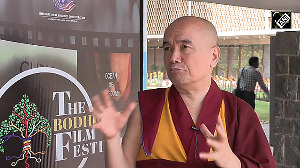The change at the helm of Ranbaxy Laboratories was undertaken to achieve and accelerate hybrid growth and integration with its new owner, Daiichi-Sankyo. This was officially announced by Tsutomu Une, the new chairman of the board. And he said the man he replaced - Malvinder Mohan Singh, once the owner - had left the company amicably.
Does that mean Singh had become a roadblock for the integration? Investment banking sources said investors in Japan had pressed for action since, after Daiichi-Sankyo bought Ranbaxy on June 11 last year, the latter had been making negative news again and again, including the ban on sale of some of its drugs in the US market and whopping financial losses, among others.
In a transaction that valued Ranbaxy at Rs 30,980 crore, equivalent to $6.2 billion, Daiichi had spent Rs 19,803 crore (nearly $5 billion) to buy a 63.92 per cent stake from Singh and other ex-promoters.
Under the deal, announced on June 11, 2008, Malvinder Mohan Singh was appointed chairman and managing director for the next five years. His tenure was to end only in 2013.
The departure of Singh was inevitable, but that it happened so soon and so abruptly is what has surprised every one. Une said Singh's departure was as per the agreement. Then, why was it announced that Singh had been appointed CMD till 2013?
At the outset, it was part of the agreement and it also depended upon getting all the legal approvals from different government departments, sources said. Since Malvinder was well versed with the company's affairs, it was natural that the Japanese owner was more in need of his services, so that the transition was seamless, said sources close to the development.
Since Ranbaxy has operations in multiple locations across the world and had also made a series of acquisitions in 2005-06, it would have been difficult for a new person to grasp the complexities of the business, said an insider.
Even now, Daiichi-Sankyo has promoted Atul Sobti as the new chief executive and managing director of the company, nominated on the board of directors by the Indian promoters, he added.
Surprisingly, till now, Daiichi-Sankyo has not nominated any of its nominees as wholetime directors of Ranbaxy. All the three nominees of Daiichi-Sankyo are non-executive directors, including chairman Une. As a result, the day-to-day affairs will be looked after by the professional Indian management headed by Sobti and Omesh Sethi, chief financial officer.
Then why this sudden and swift change? Informed sources said developments in the past three quarters, including huge mark-to-market losses and the US Food and Drug Administration's order banning sale of some Ranbaxy drugs, had raised a question mark on the acquisition. In the past three quarters ending September and December 2008 and March 2009, the company had incurred a loss of over Rs 1,100 crore (Rs 11 billion).
"They were not happy over the development, but they do not have the option to reverse the transaction. Taking complete control is a last-ditch effort of Daiichi-Sankyo to justify its investment," sources said.







 © 2025
© 2025